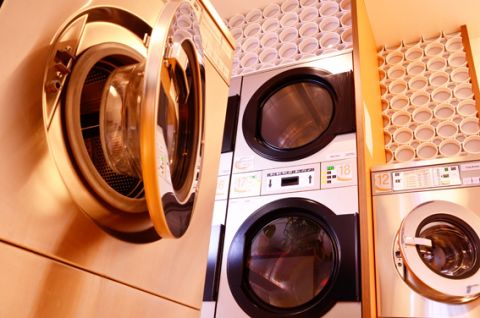While the mechanisms by which fabrics shed fibres during laundering(1), and what happens to these fibres as they enter sewage-treatment plants(2), are reasonably well understood, little is known about the quantity of microfibres generated by tumble dryers that are vented directly to the outdoors. The researchers from the City University of Hong Kong – assisted by colleagues at the University of Saskatchewan in Saskatoon, Canada – therefore developed a method to count the microfibres shed by cotton and polyester (PES) clothing during tumble-drying so that they could estimate the quantity released into outdoor air from a household's laundry each year(3).
The researchers separately dried items of clothing made from PES and items made from cotton in a tumble dryer that had a vent pipe to the outdoors. As the machine ran for fifteen minutes, they collected and counted the airborne particles that exited the vent. The results show that both types of clothing produce microfibres, which the team suggests is caused by the friction of clothes rubbing against one another as they tumble around inside the machine. For both fabrics, the dryer released between 1.4 and 40 times more microscopic fragments than were generated by washing machines in previous studies on the same quantities of clothing.
The researchers also found that the release of PES microfibres increases with the number of items of clothing in the dryer, whereas the release of cotton microfibres remains consistent regardless of the size of the load. The researchers suggest this occurs because some cotton microfibres aggregate and cannot stay airborne, a process that does not happen for PES microfibres.
Finally, the team estimates that 90–120 million microfibres are produced and released into the air outside by the average single Canadian household's tumble dryer each year. To control the release of these airborne microfibres, additional filtration systems should be adapted for dryer vents, the researchers say.
In 2020, researchers from the Institute for Polymers, Composites and Biomaterials of the National Research Council of Italy (IPCB-CNR) in Pozzuoli and the University of Plymouth in the UK demonstrated that larger quantities of microfibres are shed by items of PES clothing while they are being worn than when they are washed(4).

